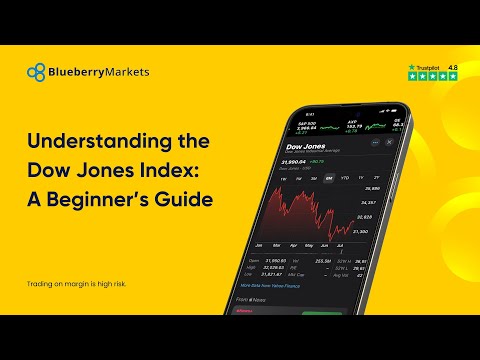What is the Dow Jones Industrial Average (DJIA)?
The Dow Jones Industrial Average, often simply called “the Dow,” is a stock market index that tracks the performance of 30 large, publicly owned companies trading on the New York Stock Exchange (NYSE) and the Nasdaq. It’s one of the oldest and most widely followed equity indices in the world. It serves as a barometer for the overall health of the U.S. stock market and, by extension, the U.S. economy.
It’s important to remember that the Dow is just one indicator. While it’s influential, it doesn’t represent the entire market. Other indices, like the S&P 500, offer a broader view.
Tip: Don’t rely solely on the Dow to make investment decisions. Consider a wider range of economic indicators and market analyses.
How is the Dow Calculated?
The Dow is a price-weighted index. This means that companies with higher stock prices have a greater influence on the index’s value. This is different from market-capitalization-weighted indices like the S&P 500, where a company’s influence is based on its total market value (stock price multiplied by the number of outstanding shares).
The calculation involves summing the stock prices of the 30 companies and then dividing by a divisor, known as the Dow Divisor. This divisor is adjusted periodically to account for stock splits, spin-offs, and other corporate actions that could artificially affect the index’s value.
The Dow Divisor is a closely guarded secret, maintained by S&P Dow Jones Indices. It ensures the index remains consistent over time, despite corporate actions.
What Companies are Included in the Dow?
The composition of the Dow is not static. S&P Dow Jones Indices decides which companies are included, aiming to maintain a representative sample of the U.S. economy. Changes are made periodically to reflect shifts in the economic landscape.
The companies included are typically leaders in their respective industries. Here are some examples of the types of companies you might find in the Dow:
- Technology companies (e.g., Apple, Microsoft)
- Financial institutions (e.g., JPMorgan Chase, Goldman Sachs)
- Consumer goods companies (e.g., Procter & Gamble, Coca-Cola)
- Industrial companies (e.g., Boeing, Caterpillar)
- Healthcare companies (e.g., UnitedHealth Group, Johnson & Johnson)
Why is the Dow Important?
The Dow serves as a quick and easily understandable snapshot of the U.S. stock market. It’s widely reported in the news and used by investors and analysts to gauge market sentiment and overall economic health.
While it has limitations, its historical significance and widespread recognition make it a valuable tool for understanding market trends. It can also be used as a benchmark to compare the performance of individual stocks or investment portfolios.
FAQ: Understanding the Dow Jones Industrial Average Q: Is the Dow a good representation of the entire stock market?
A: No, the Dow only includes 30 large companies. The S&P 500, which tracks 500 companies, provides a broader representation.
Q: How often does the composition of the Dow change?
A: Changes are infrequent but do occur when S&P Dow Jones Indices deems it necessary to better reflect the U.S. economy.
Q: Can I invest directly in the Dow?
A: No, you cannot invest directly in an index. However, you can invest in exchange-traded funds (ETFs) or mutual funds that track the Dow Jones Industrial Average.
Q: What are the limitations of using the Dow as an indicator?
A: Its price-weighted methodology and limited number of companies can make it less representative than market-capitalization-weighted indices. Also, it doesn’t include dividends in its calculation of total return.
The Dow Jones Industrial Average, often simply called “the Dow,” is a stock market index that tracks the performance of 30 large, publicly owned companies trading on the New York Stock Exchange (NYSE) and the Nasdaq. It’s one of the oldest and most widely followed equity indices in the world. It serves as a barometer for the overall health of the U.S. stock market and, by extension, the U.S. economy.
It’s important to remember that the Dow is just one indicator. While it’s influential, it doesn’t represent the entire market. Other indices, like the S&P 500, offer a broader view.
Tip: Don’t rely solely on the Dow to make investment decisions. Consider a wider range of economic indicators and market analyses.
The Dow is a price-weighted index; This means that companies with higher stock prices have a greater influence on the index’s value. This is different from market-capitalization-weighted indices like the S&P 500, where a company’s influence is based on its total market value (stock price multiplied by the number of outstanding shares).
The calculation involves summing the stock prices of the 30 companies and then dividing by a divisor, known as the Dow Divisor. This divisor is adjusted periodically to account for stock splits, spin-offs, and other corporate actions that could artificially affect the index’s value.
The Dow Divisor is a closely guarded secret, maintained by S&P Dow Jones Indices. It ensures the index remains consistent over time, despite corporate actions.
The composition of the Dow is not static. S&P Dow Jones Indices decides which companies are included, aiming to maintain a representative sample of the U.S. economy. Changes are made periodically to reflect shifts in the economic landscape.
The companies included are typically leaders in their respective industries. Here are some examples of the types of companies you might find in the Dow:
- Technology companies (e.g., Apple, Microsoft)
- Financial institutions (e.g., JPMorgan Chase, Goldman Sachs)
- Consumer goods companies (e.g., Procter & Gamble, Coca-Cola)
- Industrial companies (e.g., Boeing, Caterpillar)
- Healthcare companies (e.g., UnitedHealth Group, Johnson & Johnson)
The Dow serves as a quick and easily understandable snapshot of the U.S. stock market. It’s widely reported in the news and used by investors and analysts to gauge market sentiment and overall economic health.
While it has limitations, its historical significance and widespread recognition make it a valuable tool for understanding market trends. It can also be used as a benchmark to compare the performance of individual stocks or investment portfolios.
A: No, the Dow only includes 30 large companies. The S&P 500, which tracks 500 companies, provides a broader representation.
A: Changes are infrequent but do occur when S&P Dow Jones Indices deems it necessary to better reflect the U.S. economy.
A: No, you cannot invest directly in an index. However, you can invest in exchange-traded funds (ETFs) or mutual funds that track the Dow Jones Industrial Average.
A: Its price-weighted methodology and limited number of companies can make it less representative than market-capitalization-weighted indices. Also, it doesn’t include dividends in its calculation of total return.
The Dow Jones Industrial Average, often simply called “the Dow,” is a stock market index that tracks the performance of 30 large, publicly owned companies trading on the New York Stock Exchange (NYSE) and the Nasdaq. It’s one of the oldest and most widely followed equity indices in the world. It serves as a barometer for the overall health of the U.S. stock market and, by extension, the U.S. economy.
It’s important to remember that the Dow is just one indicator. While it’s influential, it doesn’t represent the entire market. Other indices, like the S&P 500, offer a broader view.
Tip: Don’t rely solely on the Dow to make investment decisions. Consider a wider range of economic indicators and market analyses.
The Dow is a price-weighted index. This means that companies with higher stock prices have a greater influence on the index’s value. This is different from market-capitalization-weighted indices like the S&P 500, where a company’s influence is based on its total market value (stock price multiplied by the number of outstanding shares).
The calculation involves summing the stock prices of the 30 companies and then dividing by a divisor, known as the Dow Divisor. This divisor is adjusted periodically to account for stock splits, spin-offs, and other corporate actions that could artificially affect the index’s value.
The Dow Divisor is a closely guarded secret, maintained by S&P Dow Jones Indices. It ensures the index remains consistent over time, despite corporate actions.
The composition of the Dow is not static. S&P Dow Jones Indices decides which companies are included, aiming to maintain a representative sample of the U.S. economy. Changes are made periodically to reflect shifts in the economic landscape.
The companies included are typically leaders in their respective industries. Here are some examples of the types of companies you might find in the Dow:
- Technology companies (e.g., Apple, Microsoft)
- Financial institutions (e.g., JPMorgan Chase, Goldman Sachs)
- Consumer goods companies (e.g., Procter & Gamble, Coca-Cola)
- Industrial companies (e.g., Boeing, Caterpillar)
- Healthcare companies (e.g., UnitedHealth Group, Johnson & Johnson)
The Dow serves as a quick and easily understandable snapshot of the U.S. stock market. It’s widely reported in the news and used by investors and analysts to gauge market sentiment and overall economic health.
While it has limitations, its historical significance and widespread recognition make it a valuable tool for understanding market trends. It can also be used as a benchmark to compare the performance of individual stocks or investment portfolios.
A: No, the Dow only includes 30 large companies. The S&P 500, which tracks 500 companies, provides a broader representation.
A: Changes are infrequent but do occur when S&P Dow Jones Indices deems it necessary to better reflect the U.S. economy.
A: No, you cannot invest directly in an index. However, you can invest in exchange-traded funds (ETFs) or mutual funds that track the Dow Jones Industrial Average.
A: Its price-weighted methodology and limited number of companies can make it less representative than market-capitalization-weighted indices. Also, it doesn’t include dividends in its calculation of total return.






